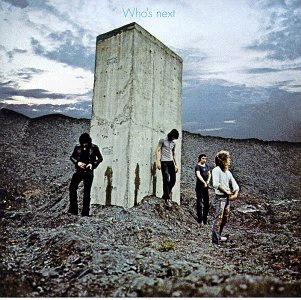
A Symbol Of Alienation Meets Rock & Roll
Pete Townshend was always one to push boundaries. After conceiving the first rock opera in history, it was only natural that he would continue leading The Who into uncharted territories. But this time there would be trouble ahead, for the first time in his artistic career.
As everybody and his wife knows, the album we know as “Who’s Next” is nothing but the salvage job of a project of Pete named “Lifehouse”, a project that would finally be realized in the year 2000 with Pete’s solo release of the “Lifehouse Chronicles” boxed set, and that was to resurface in several guises all through the years before that.
The ironic bit is that the concept lying at the heart of “Lifehouse” is not hard to grasp. Rather, it was the approach what brought it down and caused Pete to have a nervous breakdown. You see, the story is set in a near future where music does not exist any longer. It is eventually discovered again, and it provides listeners with a platform for fighting back the totalitarian regime of the day. And when “The lost chord” is stricken, people become one and vanish from this world, moving into a higher existence.
Pete wanted to approach this vision as democratically as possible, carrying out public rehearsals and incorporating new technology such as synthesizers into the basic sound of the band along with several other gadgets. The Who even found room at The Young Vic Theatre (a kind of experimental workshop) where Pete discovered how difficult it was to communicate these ideas to a public that wanted them to play My Generation and smash their guitars. A far cry from the ideal, attentive crowd that a project to be carried over time required.
The project itself was incredibly ambitious by definition, and the one element that did definitely make it come apart at the seams was the absence of manager Kit Lambert. Pete readily admits now that without his mentor (who was far gone into drugs and decadence at that point) he was absolutely at sea. And no one could throw him a lifeline.
The band tried to make it all work out somehow, yet the longer they kept at it the more disconcerting and frustrating it was. Eventually, they dissuaded Pete to call “Lifehouse” a day and release a single disc with the best new songs that had been crafted for the project.
Note that they did not choose the songs that were included themselves. Rather, they had producer Glyn Johns arrange and mix a single disc. The result was an album that went down in history as The Who’s undisputed masterpiece.
Continue to Part 2 for a song-by-song analysis of Who’s Next.

Pingback: Who’s Next (The Who) – Album Review (Part 2) | MusicKO
Pingback: Quadrophenia (The Who) – Album Review (Part 1) | MusicKO
Pingback: London Calling (The Clash) – Album Review | MusicKO
Pingback: The Who By Numbers – Album Review | MusicKO
Pingback: Face Dances (The Who) – Album Review (Part 2) | MusicKO
Pingback: Pete Townshend – General Introduction | MusicKO
Pingback: Odds & Sods (The Who) – Album Review (Part 1) | MusicKO
Pingback: My Five Favorite Who Albums | MusicKO
Pingback: What Was The Clip Andy Partridge Was Watching When He Settled On The Name “XTC”? | MusicKO
Pingback: Where Was The Cover Of “Who’s Next” Shot? | MusicKO